Related Research Articles

The VK engine is a V8 piston engine from Nissan. It is an aluminum DOHC 4-valve design.

The Lycoming XR-7755 was the largest piston aircraft engine ever built in the United States, with 36 cylinders totaling about 7,750 in³ (127 L) of displacement and a power output of 5,000 horsepower (3,700 kilowatts). It was originally intended to be used in the "European bomber" that eventually emerged as the Convair B-36. Only two examples were built before the project was terminated in 1946.
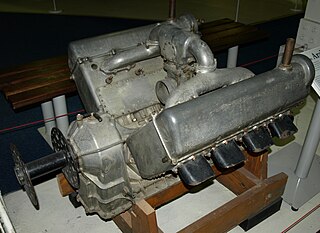
The Sunbeam Arab was a British First World War era aero engine.

The Lotus-Ford Twin Cam is an inline-four petrol engine developed by Lotus for the 1962 Lotus Elan. A few early examples displaced 1.5 litres, but the majority were 1.55-litre (1557ml) engines. It used a Ford 116E iron cylinder block and a new aluminium cylinder head with dual overhead camshafts. The Twin Cam was used in a variety of vehicles until Lotus stopped production in 1973. It was succeeded by the Lotus 907 engine.

The LeBlond radial engines, later produced under the name Ken-Royce, were a family of 3-cylinder, 5-cylinder and 7-cylinder, air-cooled radial engines for aircraft, built in the 1930s by the LeBlond Aircraft Engine Corporation until the operation was sold to Rearwin Airplanes in 1937 and renamed Ken-Royce Engines.

Alessandro Anzani developed the first two-row radial from his earlier 3- cylinder Y engine by merging two onto the same crankshaft with a common crankweb.

The Praga B2 was a low powered aero engine suitable for very light aircraft. It dates from the mid-1930s.
The Hirth HM 512 was a 12-cylinder development of the earlier, 6-cylinder HM 506, produced in the late 1930s. Both were supercharged, inverted V, air-cooled engines.
The Lorraine 9N Algol was a French 9-cylinder radial aeroengine built and used in the 1930s. It was rated at up to 370 kW (500 hp), but more usually in the 220–300 kW (300–400 hp) range.
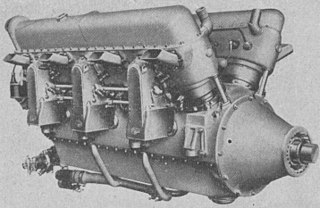
The Lorraine 12H Pétrel was a French V-12 supercharged, geared piston aeroengine initially rated at 370 kW (500 hp), but later developed to give 640 kW (860 hp). It powered a variety of mostly French aircraft in the mid-1930s, several on an experimental basis.

The Asso XI was a family of water-cooled, supercharged V12 piston aeroengines produced in the 1930s by Italian manufacturer Isotta Fraschini, and fitted on a number of aircraft types built by CANT, Caproni and others.
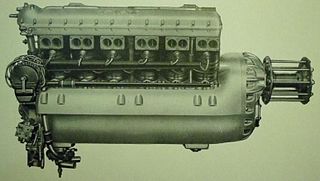
The Fiat A.24 was an Italian water-cooled aircraft engine from the 1920s, built in modest numbers. It produced 520 kW (700 hp).

The Fiat A.25 was an Italian water-cooled aircraft engine from the 1920s. It produced 708 kW (950 hp) and was used by the Regia Aeronautica for fifteen years to power their Fiat BR.2 and BR.3 bombers.
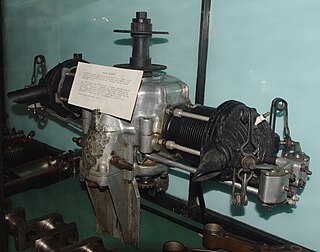
The Saroléa Albatros was a 22 kW (30 hp) flat twin air-cooled aircraft engine, produced just before World War II in Belgium.

The Lorraine 14A Antarès was a French 14-cylinder radial aero engine built and used in the 1930s. It was rated in the 370 kW (500 hp) range.

The Potez 6D is a French six cylinder inverted inline aircraft engine put into production after World War II in normal and supercharged versions. Unsupercharged, it produced a take-off power of 179 kW (240 hp) at 2,530 rpm.
The Potez 8D is the largest member of the Potez D series of air-cooled piston aircraft engines which share several common features. It is a supercharged eight cylinder inverted engine with a take-off power of 373 kW (500 hp).
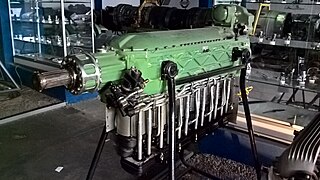
The Renault 6Q, also called the Renault Bengali 6, is an air-cooled six-cylinder, inverted piston engine, producing about 160 kW (220 hp) continuous power. It was designed and built in France and produced for more than ten years after its homologation in 1936, with large numbers built during World War II.
The Delage 12 CEDirs was a French racing aero-engine designed and built especially to power the Kellner-Béchereau 28VD for racing in the 1933 Coupe Deutsch de la Meurthe air races.
References
- 1 2 3 4 5 6 Grey, C.G. (1972). Jane's All the World's Aircraft 1938. London: David & Charles. p. 56d. ISBN 0-7153-5734-4.
- ↑ Grey, C.G. (1972). Jane's All the World's Aircraft 1938. p. 111c.
- 1 2 "Un nouveaux moteur: le Train 4E-01 de 50/55CV". Les Ailes (946): 7. 24 August 1936.
- ↑ "Que reste-t-il des Avions du 1936?". Les Ailes (910): 15. 3 November 1938.